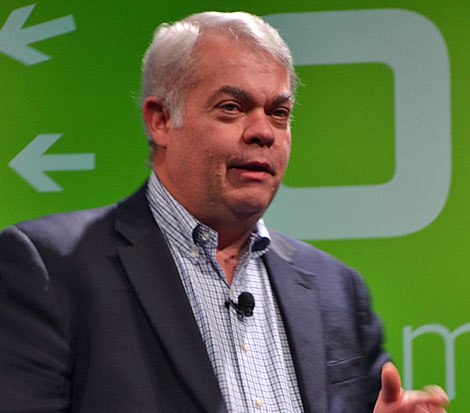The Open Compute Project Summit IV convened in Santa Clara Tuesday, drawing a crowd of 1,900 attendees. With the release of new hardware designs, there was buzz among the group about the technological innovations. The goal of the group is releasing Open Compute (OCP) Project technologies as open hardware, with a larger goal of developing servers and data centers following the model traditionally associated with open source software projects. Being committed to "open sourcing" its designs, Facebook announced new contributions to the project, which have names such as Dragonstone (a database server) and Winterfell (a Web server.)

Frank Frankovsky, Director, Hardware Design and Supply Chain at Facebook, and chairman, Open Compute, shared developments such as the addition of an Asia Pacific Open Compute group and new engineering workshops, timed between the larger summit meetings. Additionally, he announced the next summit will be held in Las Vegas in the fall of 2013. (Photo by Colleen Miller.)

Multiple innovative products were unveiled at the show including this rack design. Quanta partnered with Intel in producing this Open Compute Project compliant rack (prototype shown) which will use silicon photonics. This ultra-low latency technology will increase the speed at which components in the rack can speak to one another. The forthcoming silicon photonics technology will enable 100 Gbps interconnects, which is enough bandwidth to serve multiple processor generations. This technology could allow components that previously needed to be bound to the same motherboard to be spread out within a rack. (Photo by Colleen Miller.)

The Fusion-io booth was a busy place. Fusion-io rolled out its newest product line, Fusion ioScale, at the conference. ioScale provides up to 3.2 terabytes of ioMemory capacity, and pricing starts as low as $3.89 per gigabyte. (Photo by Colleen Miller.)

Jimmy Pike, V.P. & Senior Fellow / Chief Architect at Dell Data Center Solutions, emphasized the management of the hardware. "Form factors may change, but management is forever," said Pike. (Photo by Colleen Miller)

The audience in the ballroom at the fourth Open Compute Summit was listening to the presentation from industry experts. (Photo by Colleen Miller)
